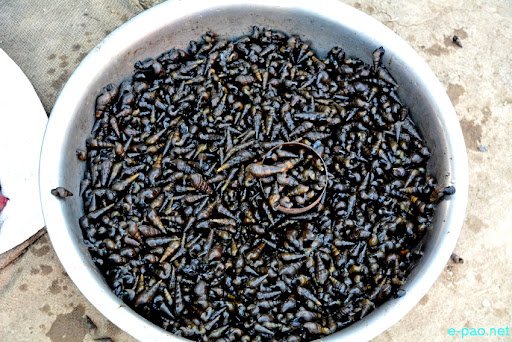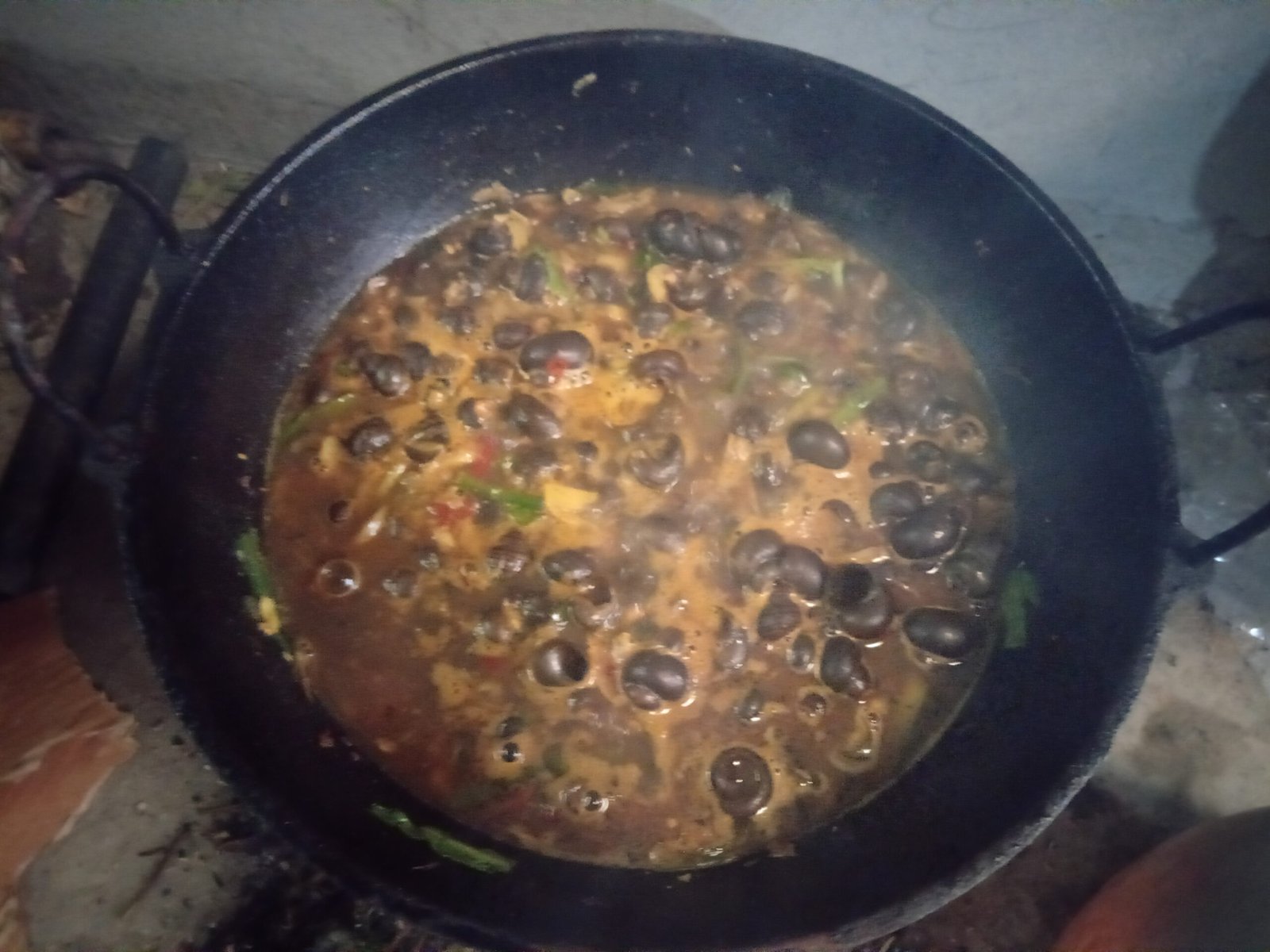Tharoi is one of the popular cuisines of Manipur. Almost every civilization in the World eat Tharoi or edible snail. These days, many entrepreneurs started snail farming. The future of food is tharoi, we will discuss how to eat tharoi in Meetei traditional way.
In Manipur, we have found three types of Tharoi or edible snail. The Lai tharoi found in the stream and rivers is very costly. Then we have Labuk tharoi or Farm snail which are found in the field. The Tharoi ningkhaibi is found mostly in ponds and lakes. These three varieties of tharoi.

In Manipur, tharoi is eaten as Tharoi thongba where we cooked this edible snail with local ingredients. Then we have tharoi kanghou where the snails are boiled and removed the snails from its shell. The snails free from its hard cover is used as pakora, locally known as tharoi bora.
In local market, we find tharoi bora, tharoi singju and tharoi kanghou which are prominent among the youths. This is the way how to eat tharoi in Meetei cuisine. While making recipe, several locally found herbs are used which provides health benefits as well.
In Manipur Labuk tharoi is sold at Rs 30 -50 per Ras gola Kouta (can). However, the price shoots up to Rs 80 during off season or winter. Out of the three tharoi, Lai tharoi is more costly than the other two.
How to eat Tharoi by cooking
The process for cooking tharoi is same for Labuk Tharoi, Tharoi Ningkhaibi or Lai Tharoi. And we have to keep the tharoi well soaked in water for at least 6 hours before planning. The tharoi which are soaked in water should be sprinkled few grain of rice. This is to remove the dirt from the tharoi.
After soaking for 6 hours, or may be for a whole day, the front and back side of the tharoi must be open with a knife. If we are planning to eat tharoi bora or tharoi kanghou, we have to boil the tharoi and remove it with a needle. Preparing tharoi takes times and a lot of patience is required.
We cannot haphazardly cooked tharoi. The soaking process is most important since tharoi are found in lakes, rivers and farms. They contain dirt, mud and there might be possible of harmful insects and parasites. Washing them and cooking them at high temperature might killed these harmful parasites and removes the dirt.
Local herbs required while cooking Tharoi
We need Mukthrubi (Sichaun pepper) leaves, Loklei (Ginger Lily) and Awa Fadigom (Eryngium foetidum L). While cooking tharoi Mukthrubi and Loklei is required. When we are preparing tharoi kanghou, Awa fadigom is best for its flavor.
These herbs have medicinal properties. Thus, eating tharoi along with these gives us several health benefits. The mukthubi leaves are a rich source of potassium, manganese, phosphorus, vitamin A, zinc, copper and iron. In fact, mukthrubi is an anti oxidant plant.

Loklei is a rhizome helpful as anti rheumatic and has several benefits in treatment of bronchitis. And Awa fadigom or sha maroi is calcium, iron, riboflavin and carotene. Awa fadigom is used to treat diseases like diabetes, fever, flu and constipation as well.
Thus, eating tharoi tongba along with these locally available herbs is necessary for a healthy lifestyle.
Benefits of eating Tharoi
Tharoi contains protein, iron, magnesium, potassium, phosphorus, selenium, copper and vitamin E. Tharoi is fat free as well.
Tharoi consist of high Iron which is a major component of the red blood cell in our body. Thus it helps to prevent from diseases like anaemia and extreme fatigue.

They are also a healthy source of omega 3 which help improve heart diseases and also very good for the human brain.
Tryptophan present in tharoi plays a vital role in our body’s regulation of sleep, appetite, and even in mood swing.

Naorem Mohen is a natural farmer, full-time blogger, and entrepreneur dedicated to promoting Manipur’s black rice Chakhao, local beverages, and edible mushrooms.

